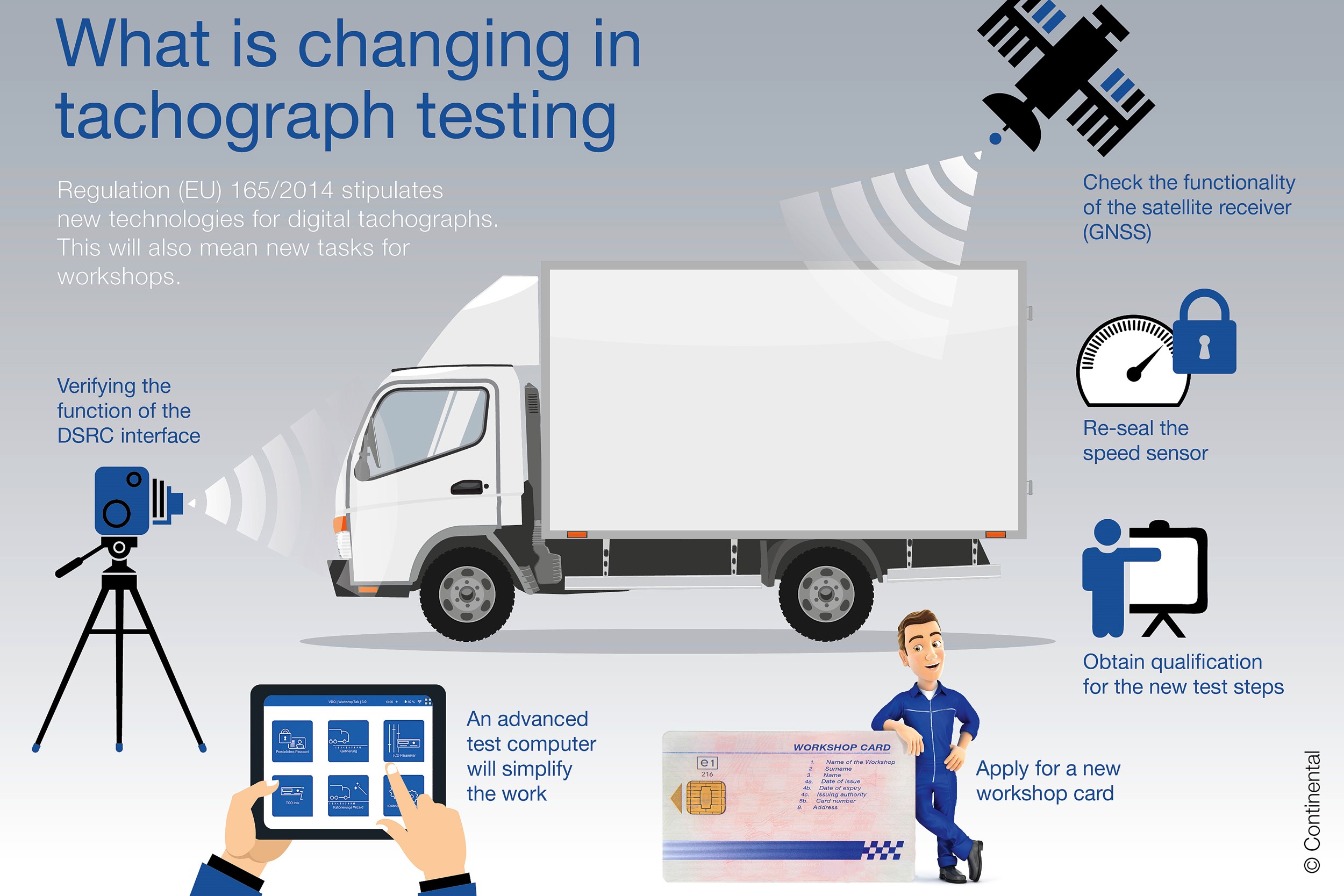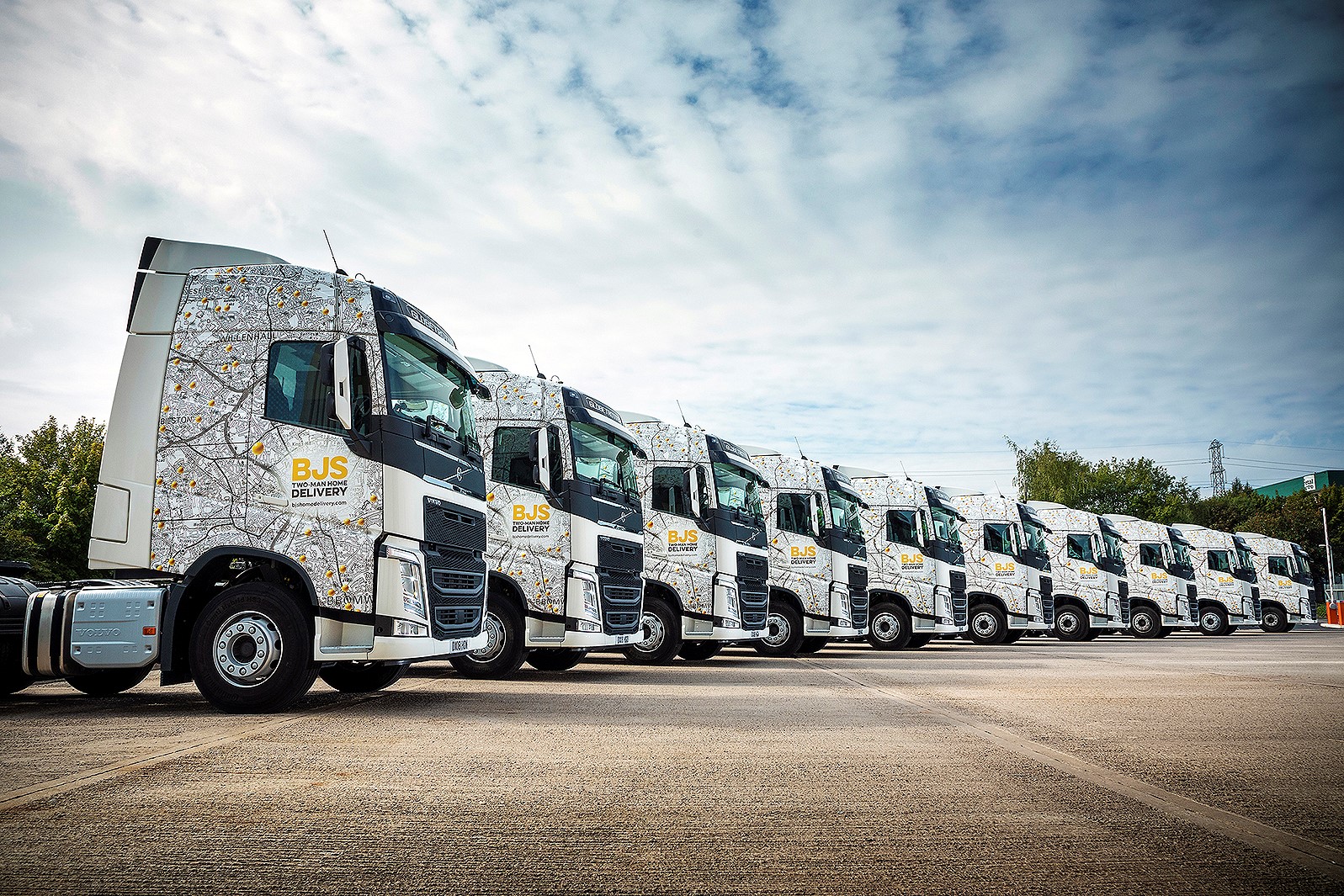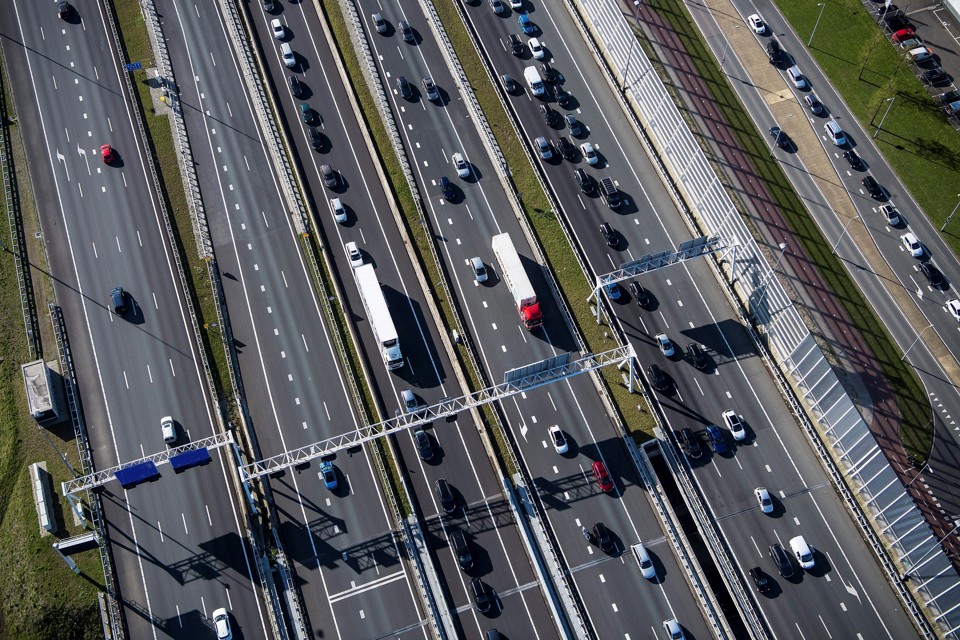Brexit or no Brexit, the so-called smart digital Annex 1C tachographs will appear in all new trucks registered in the UK after June 15 under European Union (EU) regulation 165/2014.
“Unlike current models, the Annex 1C tachos will be GNSS – Global Navigation Satellite System-enabled,” says Keith Lloyd, UK head of product management at tachograph manufacturer, Continental Automotive.
“This will enable them to record the truck’s position when the driver starts his or her shift, then after every three hours of accumulated driving time.”
They will also note the truck’s location at the end of the shift. The records will be expressed in terms of latitude and longitude, says Lloyd, and will be accurate to one-tenth of a minute. The idea is to prevent Drivers Hours manipulation.
A record is kept regardless of whether a digital tachograph card has been inserted or not. If it shows that a truck has arrived at point B having been at point A three hours previously and there is no evidence of the tachograph having been operated and a card used by whoever was behind the wheel, then questions are likely to be asked by the enforcement authorities.
“It will make it much easier for the authorities to prove tachograph fraud,” says Road Haulage Association (RHA) analysis development manager Joe Colasurdo.
James Firth, head of licensing policy and compliance information at the Freight Transport Association (FTA) adds: “It means a tachograph will no longer be there solely to ensure the Drivers Hours rules are obeyed. It will also enable them to ensure compliance with the cabotage rules (see panel).”
The tacho ruling means that trucks and drivers with nothing to hide are less likely to be stopped and that breaches of the rules are more likely to be identified.
All the above presupposes that the authority involved – in the UK’s case, the Driver and Vehicle Standards Agency (DVSA) – is prepared to invest in the necessary equipment.
The agency has made it clear that it has no intention of doing so in the foreseeable future. Surprisingly, the legislation gives the DVSA until June 16, 2034, before it needs to take action.
“Our enforcement staff already have a number of tools that effectively target tachograph manipulation,” says head of enforcement policy, Gordon MacDonald. “In 2016/17, we carried out 89,568 Drivers Hours checks, issuing 4,759 prohibitions.
“This means it is not currently effective or proportionate to invest large sums in developing the technology needed to communicate with smart tachographs from the roadside for enforcement purposes. That said, the DVSA keeps its enforcement methods under constant review, so the technology will remain under consideration as smart tachographs enter more common usage.”
The DVSA approach is perhaps understandable given that only new trucks will have smart tachographs and that they will initially only represent a small percentage of the total parc. Another route it is pursuing to ensure compliance is to gain access to the Home Office’s national ANPR (automatic number plate recognition) service used by the police and other law enforcement agencies.
Doing so would give it access to more than 12,000 ANPR cameras which could help it determine where a truck was on a particular date at a particular time. Such intelligence can then be compared with the relevant tachograph information and statements made by the operator.
Any roadside detection equipment deployed is unlikely to be housed in a neat, hand-held box, says Chris Cuffe, responsible for sales and marketing at Tachosys. It provides a wide variety of tachograph download tools and peripherals.
“The equipment will need quite a sizeable antenna and I suspect it will have to be installed at fixed locations; maybe on an overhead gantry,” he suggests. It will, after all, have to remotely grab data from a truck travelling at up to 56mph, and maybe faster if it is being operated illegally.
Smart tachographs will not have to be retrofitted to existing trucks. If a truck registered prior to June 15 has a problem with its digital tachograph, the fleet can have it replaced with an existing model, which will remain available.
It will not be obliged to upgrade to a smart one.
One circumstance where a smart tachograph will have to be retrofitted after June 15 is if the vehicle involved has not been fitted with a tachograph before.
It could, for example, be a 3.5-tonner first registered a couple of years ago which is now being used to tow a 2.5-tonne box-bodied goods trailer. Because it is a 3.5-tonner it was not fitted with a tachograph when acquired new, but needs one now because it is being operated at a six-tonne gross train weight.
That assumes that the operating company cannot claim exemption from the Drivers Hours rules because of the nature of its business.
“All trucks crossing international borders will have to have smart tachographs installed by June 2034, but by that stage any vehicle used on such work is likely to have one anyway,” says Firth. “It is worth noting that there have been discussions in the European Parliament about bringing this date forward by at least 10 years.”
Smart tachographs will accept existing drivers’ cards, which are gradually being phased out, but the cards will not record latitude and longitude or any of the other extra information that smart units can produce, says Lloyd. Anybody interested will have to interrogate the onboard unit.
The Annex 1C cards now being issued can do so, and will work in older digital tachographs too, says Stoneridge’s spokesperson.
Fleets with trucks with smart tachographs will have to obtain a new company card plus a new workshop card if they do their own servicing. Technicians who get involved in this area will have to complete an approved Annex 1C Tachograph Fitter course.
Workshop cards suitable for smart tachographs will be issued on April 1 and will be valid for 12 months, says Firth. Despite the June 15 statutory introduction date, trucks with the new tachos could start creeping onto the market before April, he points out, and the FTA is asking the Driver and Vehicle Licensing Agency (DVLA) to ensure cards are issued accordingly.
Calibration tools will have to be updated so they can test the GNSS and DSRC modules.
“Another feature is new seals which will have a unique identification number allocated by the tachograph manufacturer and which will be fully traceable from the manufacturer to the installer,” says the Stoneridge spokesman. “Workshops will need to record the use of the seal after calibration and the seal number will have to be recorded on the vehicle calibration plaque.”
Existing download tools cannot be used effectively with smart tachographs unless the firmware – the software programmed into them – is upgraded.

What is cabotage?
Cabotage describes the domestic transport of cargo within a country that is not the country where the truck is registered.
Under EU regulations, once cargo carried in the course of an incoming international transport movement has been delivered, the haulier concerned is allowed to carry out up to three cabotage operations using the same vehicle. The final unloading of goods carried during the third operation must take place within seven days of the end of the incoming international journey, says the FTA.
A spokesperson for Stoneridge, Continental’s key rival in the sector, says roadside inspection officers will be able to communicate with a smart tachograph as the truck drives past using Dedicated Short-Range Communication (DSRC) and a secure radio link to detect certain infringements.
They will be able to see, for instance, if a card has been inserted while the truck is in motion – why wasn’t it inserted when the journey started? – or if the power supply to the tachograph has been interrupted, which could be evidence of manipulation.
Inspectors will not be able to collect details such as how long the driver has been driving, when breaks were taken and for how long.
They can use the information they glean to alert their colleagues a few miles down the road so that a roadside check can be carried out. The data cannot be used to levy fines, and must be deleted after three hours if no issues are detected.
* Operators on international work should be aware that, unlike the DVSA, the relevant authorities in other EU countries may decide to invest in roadside enforcement equipment long before the 2034 deadline.
Use of data to benefit fleet and driver

Although it is not a legal requirement, a smart tachograph is likely to have an ITS – Intelligent Transportation Systems – interface which will make it easier to download data into fleet management systems.
The General Data Protection Regulation means, however, anything that can be construed as personal data – the driver’s name, for example – cannot be transferred without the individual’s consent, says Continental’s Keith Lloyd.
Derek Broomfield, chairman of transport training and tachograph analysis specialist Novadata, says: “It will be more important than ever that operators ensure that there are robust policies and processes in place to manage and record tachograph data.”
Continental believes fleets could use the ITS interface in a variety of ways which would benefit both the operator and the driver.
Tachograph data could, for example, let an app know how long it is before a driver needs to take a legally-required break, says Lloyd. The individual could then be navigated to the closest truck stop with free parking spaces that can be reached within the time limit.
Data could be provided to payroll service providers to help them calculate wages due.
Responsible for 27 trucks and more than 100 vans, Gareth Pritchard, transport manager at Wednesbury, West Midlands-based BJS Home Delivery, is in favour of anything that ensures the Drivers Hours rules are fully obeyed.
“You can have situations where a driver will tell you that he has driven for four-and-a-half hours and needs to take a break,” he says.
“In reality he may have only driven for two-and-a-half hours, so he doesn’t have to take a break yet; and can be told to keep on driving.”

















Login to comment
Comments
No comments have been made yet.